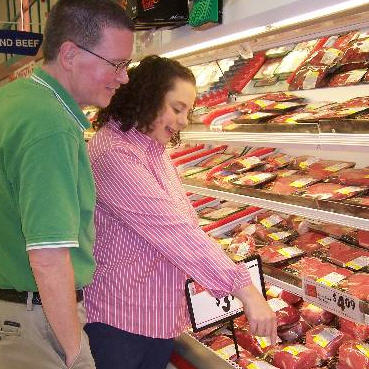Beef Shelves Nearly Empty

By Aimee Nielson, University of Kentucky
 Just as the summer grilling season is heating up, beef supplies across the country are down, meaning it might cost a little more to host that backyard party. In fact, the number of beef cattle in the U.S. is reportedly less than 30 million—the lowest number since the early 1960s. And when numbers go down and feed prices go up, consumers end up paying more at the grocery store.
Just as the summer grilling season is heating up, beef supplies across the country are down, meaning it might cost a little more to host that backyard party. In fact, the number of beef cattle in the U.S. is reportedly less than 30 million—the lowest number since the early 1960s. And when numbers go down and feed prices go up, consumers end up paying more at the grocery store.
"In the interest of telling the whole story, productivity has also increased since that time," says Kenny Burdine, an University of Kentucky (UK) College of Agriculture economist. "But, the combination of fewer cattle over the past several years and generally strong export markets has left beef supplies relatively tight."
UK beef specialist Les Anderson explained that for the past several years, many beef producing areas of the U.S. have experienced drought situations and increased feed costs.
"Drought affected vast segments of many of the beef producing states, and that led farmers to reduce the number of cattle they produce," he says. "Also, many feed costs have been markedly higher during the drought periods, so ranchers have been reluctant to hold onto their cattle simply because it costs too much to feed them."
Because of those conditions, Burdine says the industry has seen sizeable decreases in cattle inventory in many areas—most notably the Southern Plains.
"Many areas have been impacted by the weather, including the Southeast," he says. "Another factor worth noting is that we are seeing a considerable conversion of pasture and hay ground to row crop production."
Even in Kentucky, beef cow numbers are down, about 15% from January 2007 to January 2013, but beef specialists expect the beef industry in the state to hold steady.
"Kentucky farmers have leased land, previously used for pasture, to crop farmers because of high prices being paid for land leases," says Roy Burris, UK beef specialist at the UK Research and Education Center in Princeton. "But, a lot of land here is not suitable for cropping, so the best use for that land is to continue grazing. Barring any severe droughts, I really think cattle numbers in Kentucky will hold steady."
All that says, consumers still have a strong demand for beef products, and that means the U.S. will export about 2% less beef and import about 15% more.
"Even with strong demand, U.S. beef consumption per person dropped to about 55 lb. per year, compared to 63 lb. in 2008," says Lee Meyer, UK College of Agriculture economist. "It had peaked at 94 lb. in 1976 and was at about 65 lb. just 10 years ago."
Jim Robb, director of the Livestock Marketing Information Center in Denver says in a recent Wall Street Journal article that in 2012, Americans spent $288.40 per person on beef, a 4.2 percent increase from $276.80 a year earlier as retail prices rose. He says U.S. beef sales reached $90.6 billion last year, up from $86.4 billion in 2011. Yet volume is in decline.
At the grocery store, consumers will be in for some sticker shock as experts expect beef prices to set record highs in coming weeks.
Although it won’t make a significant difference in overall beef supply, Kentucky does have many producers who produce beef for local markets. Meyer says that as feedlot production costs have gone up so much, the relative cost of producing beef on Kentucky pasture-based systems has decreased.
"Kentucky is becoming more competitive in local beef markets, and this will support market growth," he says.
It’s hard to tell when the situation will stabilize or reverse. In the big picture, this is only part of a cattle cycle that producers know well.
"Supply and demand ebb and flow in what producers recognize as the ‘cattle cycle,’" Burdine says. "Most cycles are approximately 10-year periods where the number of U.S. beef cattle is expanded and reduced in response to how producers perceive changes in profitability. But, with the constraints facing managers, this expansion may see long delays."
The cattle cycle seems relatively long because it takes time between when cow-calf producers decide to expand their herds to breed more beef cattle and the time when those animals reach harvest weight.
"There are always many fluctuations in prices and profitability for producers and consumers alike," Burdine says.







